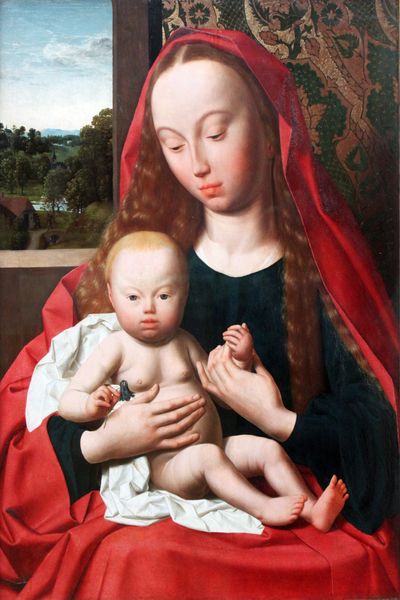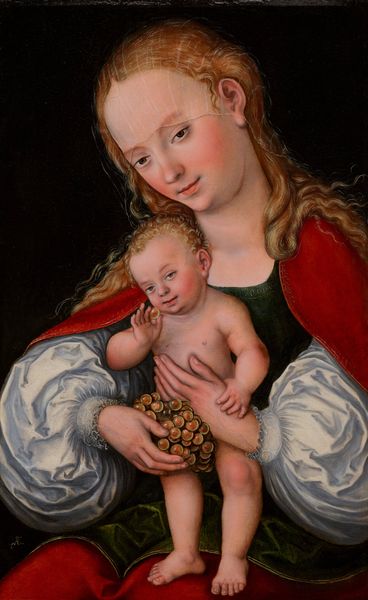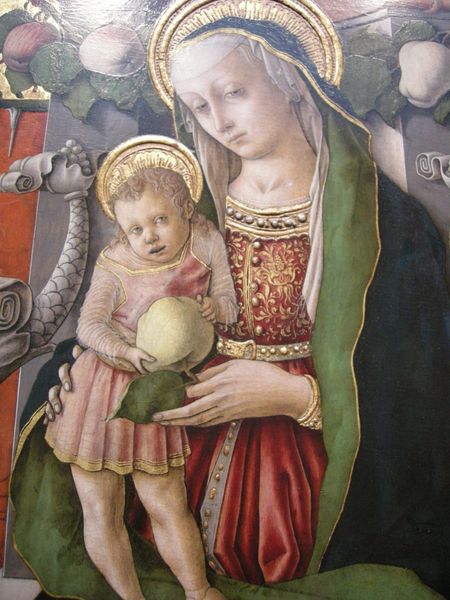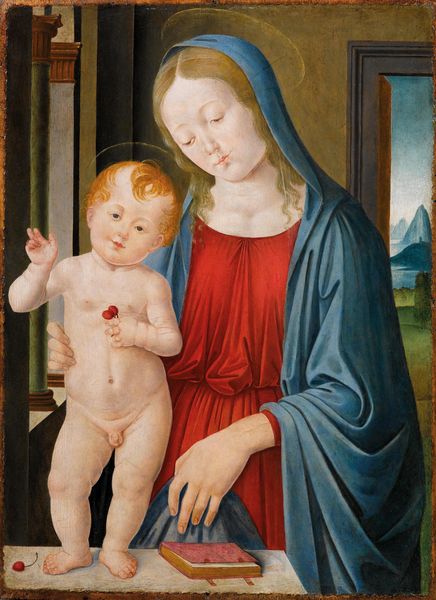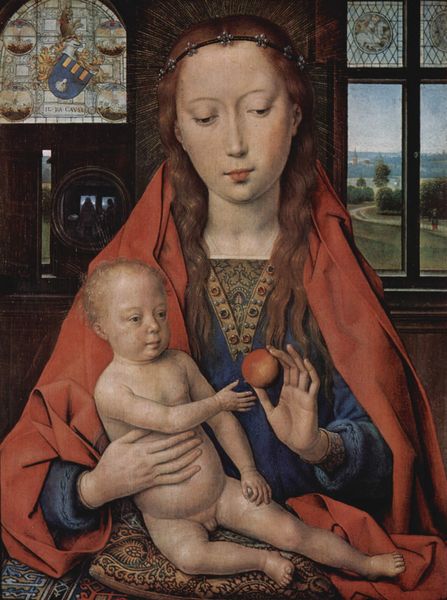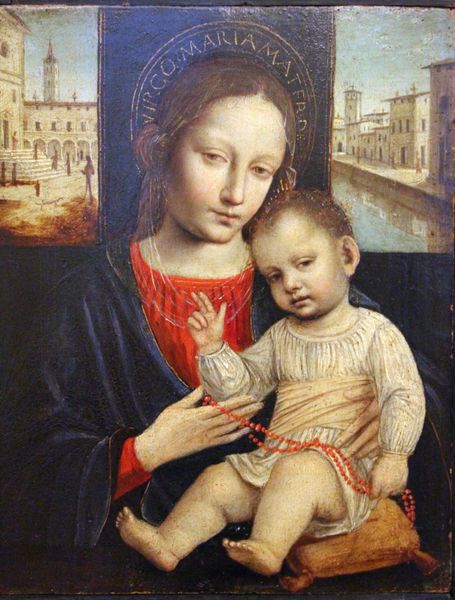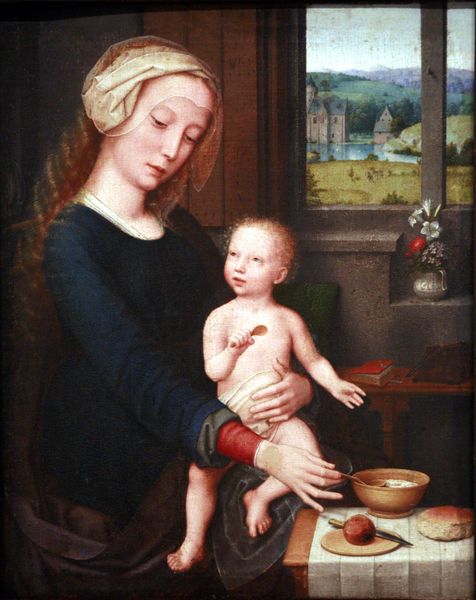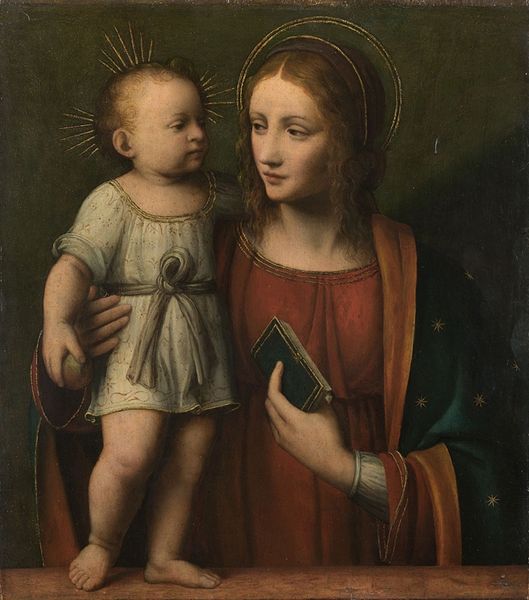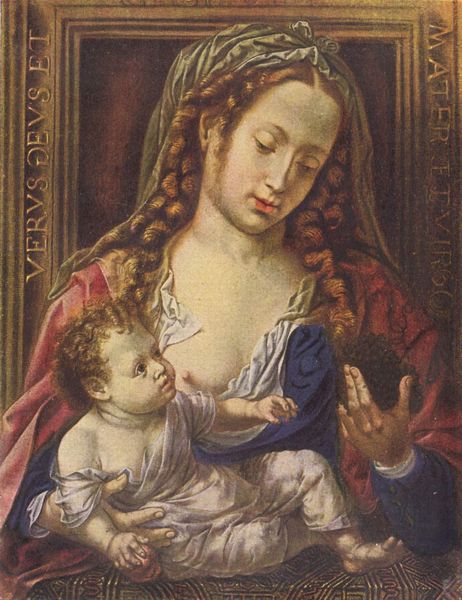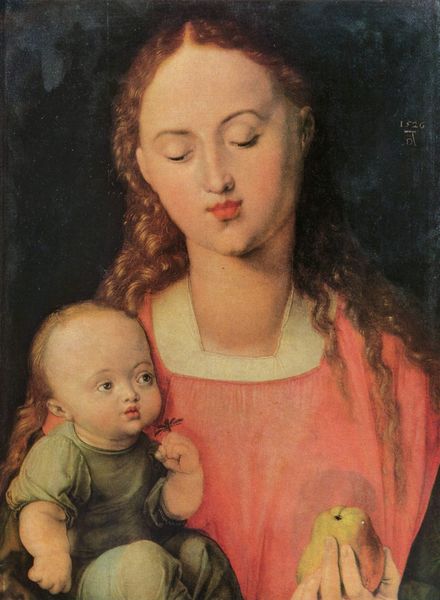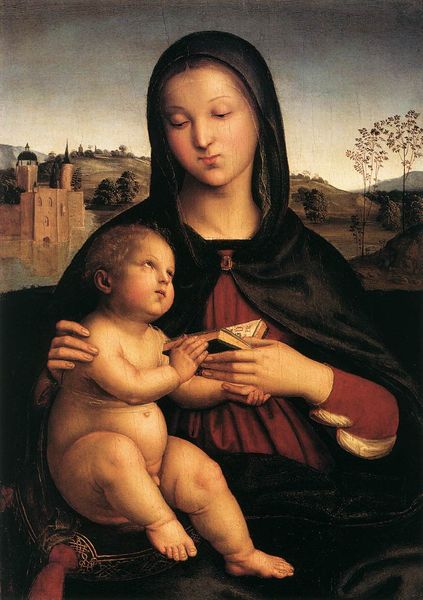
panel, oil-paint
#
portrait
#
high-renaissance
#
panel
#
oil-paint
#
christianity
#
italian-renaissance
#
virgin-mary
#
christ
Copyright: Public domain
This panel of the Polyptych of Cervara was made by Gerard David around 1500 using oil paint, a relatively new medium at the time. The smooth, luminous surfaces David achieved were thanks to oil's unique properties. Unlike tempera, which dried quickly, oil allowed for subtle gradations of tone, and a remarkable level of detail. The process began with grinding pigments into oil, a task often performed by workshop apprentices. Layer upon layer was then applied to a prepared wood panel, each painstakingly rendered with fine brushes. It's easy to overlook the sheer labor involved in producing such a painting, which would have been a costly and highly valued object, commissioned by wealthy patrons as devotional objects. The commercial structures of the time were heavily implicated in the painting's creation. The pigments themselves may have been sourced from afar through trade networks, demonstrating how art, even in the 16th century, was tied to wider systems of labor, politics, and consumption. Considering these material and historical aspects allows us to appreciate the painting not just as a devotional image, but also as a product of its time, shaped by the hands and economies that brought it into being.
Comments
No comments
Be the first to comment and join the conversation on the ultimate creative platform.
